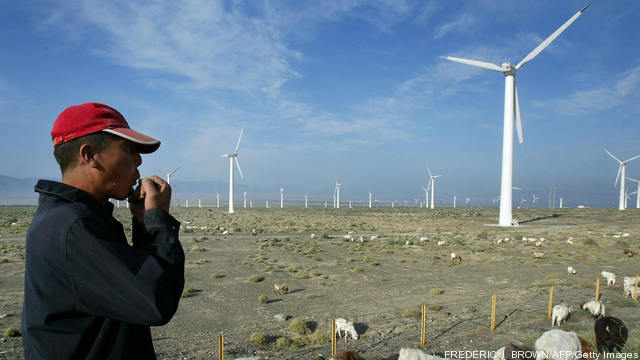
China’s success in building a domestic wind industry has turned it into a victim of its own success. Domestic and global oversupply has pushed Chinese companies into an aggressive price war that extends the shadow of Solyndra to the wind sector.
Companies from China and other Asian countries such as Japan’s Mitsubishi and South Korea’s Samsung are now reaching previously untapped markets such as Bulgaria, Belarus and Macedonia as well as debt-laden European countries such as Ireland and Greece.
“The byproduct [of oversupply] which is becoming more heated with all this pressure on margins, is that we’re seeing a lot of very, very aggressive activity with Chinese manufacturers trying to go abroad, particularly targeting the offshore market,” says Caitlin Pollock, China wind analyst at IHS Emerging Energy Research. “They can also offer much more competitive prices. A lot of those prices are real and to an extent they are also promotional.”
Shipping costs and more rigorous regulations outside of China and demand in the US and Europe for high quality technology may foreshorten Chinese manufacturers margins overseas, says Pollock.
Cash Is King
However, the European debt crisis has presented opportunities for Chinese manufacturers with long lines of credit, she says. Goldwind and Sinovel alone have secured €8.7 billion in overseas expansion funding from the China Development Bank, compared with European Investment Bank funding of €6.2 billion for all renewable energy projects in EU.
“A lot of manufacturers seem to be taking advantage of almost crisis stricken markets,” says Pollock. “We can see that in the European Union ironically. They are coming in at both inopportune and opportune time. Three or four years ago, western manufacturers were maxed out for years in advance and it was really hard to get turbines. Now there’s an oversupply and inadequacy of financing, that’s what they are taking advantage of.
“One of their strategies in entering new markets is offering financing via equity and debt and offering extended warranties on their turbines which a lot of people say have very little track record.”
Comparing wind and solar they’re a decade apart – Vic Abate
In April this year, Sinovel, China’s largest manufacturer, signed an agreement with Greek Public Power Corporation to supply up to 300 MW of onshore capacity, with the potential for additional offshore development. Sinovel, which last year knocked GE from second place in terms of global turbine supply, has also smoothed the entry into the market with the promise of building a factory in the debt-stricken country.
In August this year, Chinese manufacturer XEMC VWEC secured a supply agreement with Irish developer Gaelectric for 13.6 MW of wind turbine capacity. The initial deal appears small, but it may include an additional pilot offshore turbine. Sinovel may sign off on a larger deal for 1 GW Mainstream Renewable Power in Ireland over the next five years.
Countering The Chill
“If you’re a bank and you’re looking at investing in certain markets it’s a bit counter-intuitive,” Pollock says. “A lot of these companies are relying on strong credit lines that they are getting from the Chinese Development Bank and other banks so you would think there would be some sort of checks put into place to make sure it’s a good investment.”
Tactics to undercut costs may be harder to emulate in wind than they were in solar PV after China recently agreed to terminate its Special Fund for Wind Power Manufacturing program following complaints filed by the US at the WTO.
Turbine manufacturers also dismiss that the “chilling effect” of the Solyndra price wars could extend to wind, with cheaper manufacturers snatching orders from them.
“Comparing wind and solar they’re a decade apart,” Vic Abate, GE’s vice president of Renewable Energy, said. “I’m bullish on solar, but if I look at the challenges we had in wind in 2002 and where it’s come over the last decade, solar is going to do the same thing, it’s just a decade behind. On the wind side, the cost curve is really in the build out phase.”
For other stories in the Wind Rush series, see Clean Revolution Changes Global Power Industry Dynamics and US Industry Hurtles Towards A Cliff Without Production Tax Credit.
Photo Caption: A wind farm in rural Western China.
